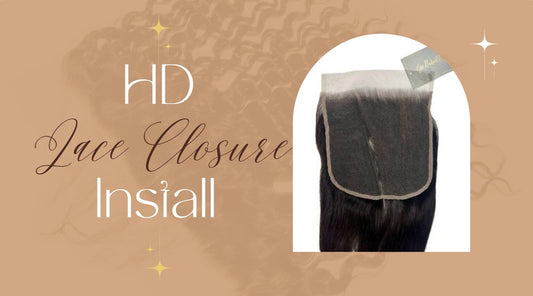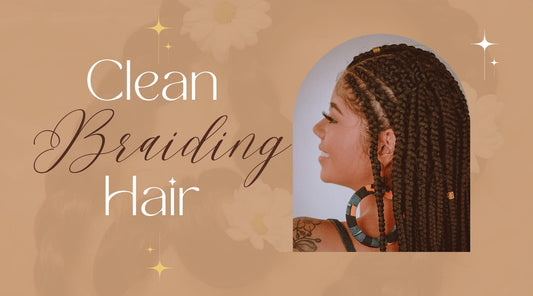
How Much Do Hair Extensions Cost?
Share
Dreaming of longer, fuller, or just more fabulous hair? Hair extensions like Ponytail Extensions can make that happen in a jiffy.
But as with anything, you want to do your due diligence before buying them to make sure you're getting the most bang for your buck.
To help you along, we're breaking down exactly how much different types of hair extensions cost, what factors influence the price, and how to choose the best option for your budget and hair goals.
Types of Hair Extensions and Their Costs
Clip-In Extensions: $20-$400
Clip-in extensions are the most budget-friendly and beginner-friendly option.
These temporary extensions attach to your hair with small clips and can be removed daily.
Basic synthetic clip-ins start around $20-$40, while high-quality human hair versions range from $80-$400 and more.
The great thing about clip-ins is that you can wear them whenever you want and style them at home without professional help.

Tape-In Extensions: $50-$600
Tape-ins use double-sided tape to stick extensions close to the root of your natural hair.
They look very natural and lie flat against the scalp, but they do require a professional to install and remove.
The extensions themselves typically cost $50-$400, but you'll also need professional installation, which adds another $100-$200 to the total.
Because the tape can weaken over time, you'll need to have it adjusted or reinstalled every couple of months.

Sew-In Extensions (Weaves): $100-$800
Sew-in extensions, also called weaves, involve braiding your natural hair into cornrows and then sewing extension tracks onto the braids.
It takes time and skill to install, so salon costs are higher.
However, the results are secure and can last up to two months or more with proper care. The hair on its own costs $100-$400, while professional installation ranges from $100-$400.
This method works particularly well for thick, coarse hair and can last six to eight weeks with proper care.

Fusion/Bonded Extensions: $300-$1,500
Fusion extensions use keratin glue to bond small pieces of hair to your natural hair with heat.
The result is very natural-looking and long-lasting, but it's also one of the most expensive and time-consuming options.
That's because this meticulous process requires a professional application and can take three to four hours to complete.
The extensions cost $200-$800, with installation fees adding another $200-$700.
While expensive, fusion extensions can last three to four months and provide the most natural-looking results.

Micro-Link Extensions: $60-$1,200
Micro-link extensions, also called micro-bead or loop extensions, attach using small metal rings or beads.
There's no glue or heat involved, and they can be adjusted as your hair grows out.
The extensions themselves can cost anywhere between $300 and $600, with professional installation adding another $200 to $600.
These extensions can last two to three months before needing adjustment.

Halo Extensions: $50-$300
Halo extensions are a newer option that uses an invisible wire to sit on top of your head like a headband.
Your natural hair covers the wire, creating the illusion of fuller, longer hair. These range from $50 for synthetic options to $300 for premium human hair versions.
Since they require no clips, tape, or bonds, halo extensions are completely damage-free and perfect for occasional wear.

Factors That Influence Hair Extension Costs
Hair Quality
The type of hair used is the biggest factor in determining cost. Synthetic hair is the most affordable option, typically costing 50-70% less than human hair.
However, synthetic extensions have limitations; they can't be heat-styled, have a shorter lifespan, and may look less natural. Human hair extensions, on the other hand, come in different grades, and all can be heat-styled, even curled by a flat iron, and colored.
Remy human hair, where all cuticles face the same direction, represents the gold standard and costs significantly more than non-Remy hair.
Virgin hair, which has never been chemically processed, commands the highest prices but offers the best quality and longevity.
Length
Length dramatically affects pricing. Extensions typically come in 12-inch to 24-inch lengths, with each additional inch adding to the cost.
Expect to pay 15 to 25% more for each 2-inch increase in length. While 16 to 18-inch extensions suit most people, longer lengths require more hair and thus cost more.
Color and Texture Matching
Standard colors like natural brown and blonde are typically the most affordable, while custom colors, highlights, or unusual shades like our FAV the Valentine HD Glueless Pop On Wig often cost 20 to 40% more.
Similarly, textured hair, like hair that's curly, kinky, or coily, usually costs more than straight hair due to processing complexity and higher demand.
Professional Installation vs. DIY
Professional installation ensures proper application and reduces the risk of damage, but it significantly increases the total cost.
Highly experienced stylists or salons in big cities usually charge more for installation, anything from $100 to $700.
But the upside is that the work often looks better and lasts longer.
Going with someone cheaper might save you money upfront, but it can lead to uneven application, discomfort, or even hair damage.
Understanding What You're Paying For
When evaluating hair extension costs, consider the total investment, not just the initial price.
Cheaper extensions may need to be replaced more frequently, while higher-quality options last longer and look more natural.
You should also factor in maintenance costs, styling products, and potential salon visits for adjustments.
Quality extensions should blend seamlessly with your natural hair, withstand regular washing and styling, and maintain their appearance over time.
Furthermore, premium extensions often come with better customer support, return policies, and styling guidance.

Choosing Based on Your Budget and Goals
Budget-Friendly Options ($20-$150)
If you're new to extensions or want occasional wear, start with clip-ins or halo extensions like our Jet Black Straight Clip-ins.
These options let you experiment with different looks without a major financial commitment.
Look for mid-grade human hair or high-quality synthetic options that offer good value.
Mid-Range Investment ($150-$500)
For regular wear, consider tape-ins or sew-ins like our Natural Blowout Tape-In.
These semi-permanent options offer better integration with your natural hair and last longer than temporary alternatives.
The higher upfront cost often balances out over time due to their durability.
Premium Investment ($500+)
If you want the most natural look and longest-lasting results, fusion or high-end micro-link extensions are worth the investment.
These methods provide seamless blending and can last several months with proper care.
Making Your Decision
When choosing your preferred extension, the first things you need to consider are your goals and your lifestyle.
Someone with a busy schedule might favor clip-ins for their convenience, while those seeking a permanent transformation might prefer fusion methods despite the higher cost.
And don't forget ongoing maintenance. Some types, like fusion and sew-ins, need professional touch-ups or reapplication every few months.
You'll also need special brushes, sulfate-free shampoos, and maybe extra styling tools to keep your extensions looking their best.

Tress for Success
Hair extensions are an investment in how you look and can affect your confidence.
While it's tempting to choose the cheapest option, investing in quality extensions and professional installation often provides better results and value over time.
Take time to research salons, read reviews, and consult with professionals to find the best option for your specific needs and budget.



